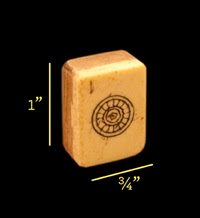This Abacus Screen is a House of Suzie Wong original design. Made from recovered elm wood with jadeite discs and beads, this screen is suitable for use as a room divider. The beads are fully movable along the wooden rods. Height : 6ft 2in / 1.88m
Length: 5ft 10in / 1.78m
Width (at base): 18in / 0.46mThis unique screen is available at our showroom for
RM 15,800
Length: 5ft 10in / 1.78m
Width (at base): 18in / 0.46mThis unique screen is available at our showroom for
RM 15,800





















